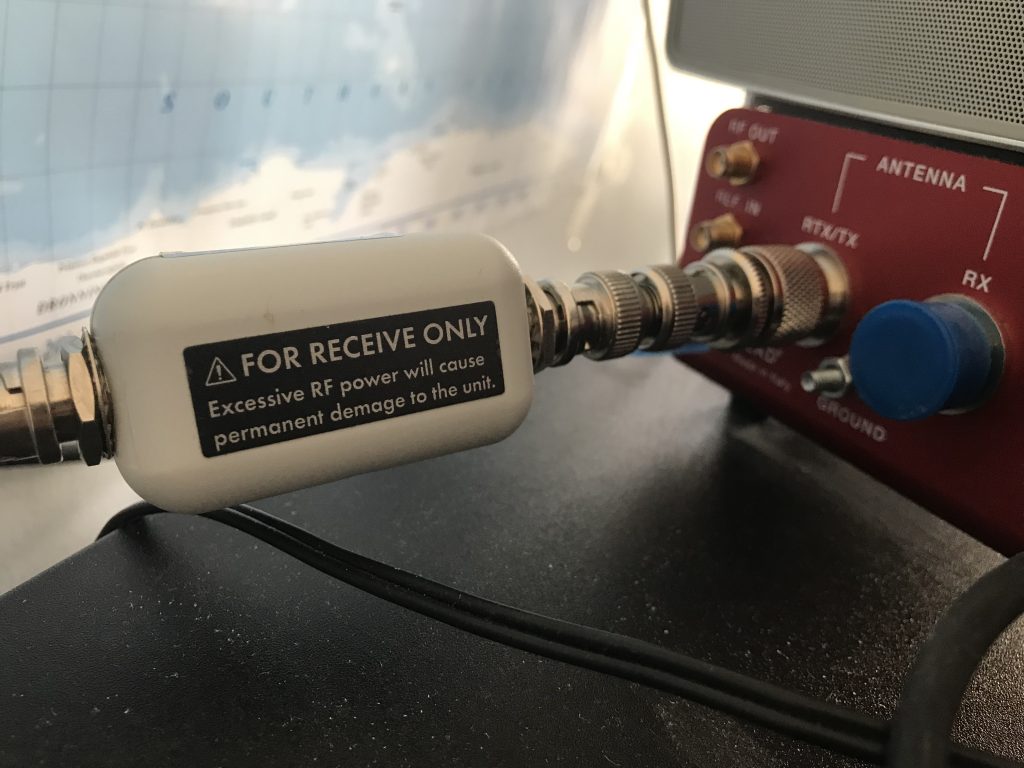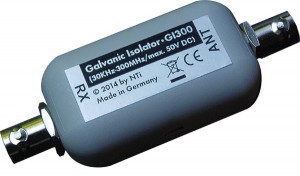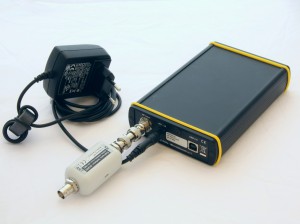
My QTH suffers very badly from local QRM and of course many DXers and radio aficionados have the same problem. This has resulted in my not being able to conduct any MW DX in the early evenings; in fact I’m not able to operate with even a reasonable noise floor until well after midnight when the neighbors have switched of TVs etc. and gone to bed. Thus, I’m usually up half the night when I want to DX on Medium Wave and similarly with Shortwave. Thank goodness for the recording facility on the Elad FDM software. If it weren’t for that, I’d have gotten even less sleep these past two years.
Dennis at Bonito sent me one of their GI300 Galvanic Isolators for testing. It works by isolating the path of the direct current between the outer shield of the coax cable and the shielding of the antenna feed line. In doing so, a toroidal transfomer can suppress interference caused by the potential difference between these conductors. In addition, the inner conductor of the coax cable is electrically insulated with capacitors and integrated with and coarse and fine voltage surge protection. Sounds good to me and at a cost of only 59 Euros, if the GI300 works, it is indeed, money very well spent.

The GI300 will also protect your receiver against sheath waves and voltage surges.
A two-way voltage surge protection has been integrated. On the antenna side there is a gas discharge tube with an ignition voltage of 90V. On the receiver side the isolator is fitted with an ESD-diode (30KV; max.pulse power 350W (8/20µs) and in addition, the input and output has been blocked for direct currents above 50V.
The GI300 covers a very DX-friendly wide-band range of 30 kHz – 300 MHz (typically with around 1dB insertion loss). The unit can be used with almost any receiver capable of connecting to an external antenna and will also work at frequencies up to 1 GHz. However, it is important to note that above 300 MHz, the insertion loss may increase by up to 3dBs.
One word of warning; The connection between the GI300 and your receiver input should be as short as possible. I tried mine on the antenna side of my antenna switch and it still worked very well, but best results are obtained if you connect it directly into the antenna socket of your receiver. I used a PL259 to BNC adaptor for my Elad FDM DUO and the GI300 plugged straight in. Note also that whilst it is impossible for the GI300 to pick up electrical interference (this is intrinsic to the toroidal transformer and strip line design) it could still occur if you have a length of effectively potential-free transmission line from it, to your receiver.
Below are my reception videos, demonstrating how well the GI300 performs in suppressing noise in my shack. As you will see, the GI300 makes a huge difference to the noise floor on the Elad FDM DUO when coupled to my Wellbrook ALA1530 magnetic loop antenna (outdoors). I was genuinely surprised as to how well this clever little device worked in mitigating QRM within my shack. It can actually make the difference in hearing recovered audio and not. Please note:
THE FIRST 60 SECONDS OF EACH VIDEO ARE WITH THE GI300 IN CIRCUIT AND THE FOLLOWING 60 SECONDS WITHOUT.
These videos can also be viewed on my YouTube channel Oxford Shortwave Log
Thank you.
Clint Gouveia


Thank you very much for the information and demonstration about this device. Very helpful indeed. I will be purchasing a GI300 in the very near future. 73s